 By Mark Gillies
By Mark Gillies
January 15, 2015
BURLINGTON, ON
Burlington is using the month of August to celebrate local history. Sometime ago the Gazette published a series of articles by Mark Gillies, a lifelong Burlingtonian. It is appropriate to re-publish the stories about the people who built this city. This is part two of the Spencer Smith story.
Spencer Smith got to Canada as part of the immigration of British children into Canada and Australia. The children were shipped from England by well meaning people but there were some horrific abuses and I believe it is necessary to expand the Spencer Smith story and learn more about how these boys who, without their consent became indentured servants. They were referred to as “Home Children”.
The poem Spencer Smith wrote, it was included in part 1, aches with the longings of a man who missed so much of a natural childhood.
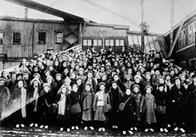
Home children on a dock in St. John NB – waiting for trains to take them east.
The concept of Home Children started with honourable intentions; with good people trying to salvage young children from a parent-less home, or incredible poverty. Relocate them to a better life in Canada or Australia, that’s all they had to do. What’s the problem with that?
What made the idea work, was that farmers in Canada and Australia faced a severe labour shortage. They had recently immigrated themselves from Europe, cleared their fields, and grew their crops. Only problem was, who was going to do the harvesting, tend to the fields, feed the animals, and everything else that farmers do in this difficult labour intensive profession?
They didn’t have anybody to help. Governments were perplexed as well; those in Canada and Australia were more than happy to bring in immigrants to open up land and create farms. Sometimes they even gave them free land and supplies, but governments overlooked one part of the equation. Who is going work these large farms? They desperately needed a solution, and quickly.
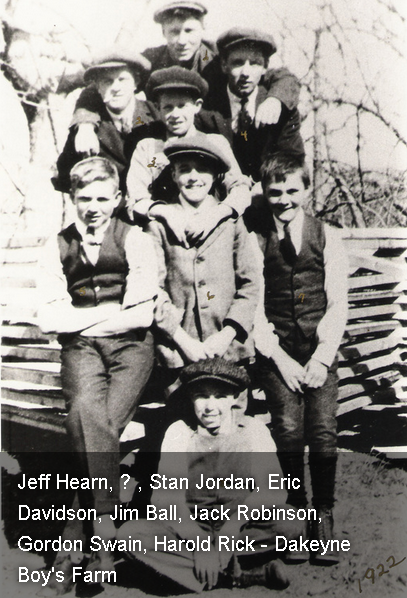 No doubt about it, everyone at the time believed this was a “WIN-WIN” situation. Spencer Smith’s story was a perfect example of one that seemed to have a happy ending.
No doubt about it, everyone at the time believed this was a “WIN-WIN” situation. Spencer Smith’s story was a perfect example of one that seemed to have a happy ending.
Featherstone Martindale & Spencer Smith.
Spencer Smith’s sponsor was Featherstone Martindale from Caledonia. If you have ever been to Caledonia, it seems that about every third person you meet has the last name Martindale. They are a fantastic local family and they show up everywhere in Caledonia. Featherstone was born in 1848 in Haldimand County. Featherstone must not have been impressed by his first name, because he always went by the name Fred. He was a good honest man and a hardworking farmer who desperately needed help on his farm. Fred over the years became a father of 8 children and had married 3 times.
The Farmer’s Wife in Spencer’s Poem
In Spencer’s poem, he speaks of the farmer’s wife who influenced him. Spencer was referring to Eliza Mary Shult, who was Fred’s second wife. His first wife Eliza Jane Anderson died in 1881 after giving birth to a daughter named Ann. Fred married Eliza Mary Shult on January 8, 1883, and the new couple proceeded to have 7 children, the first born was Frederick who died in early 1884. Then another son named Featherstone was born in late 1884, and another 5 children were born between 1886 and 1895. In 2 quick years from 1883 to 1885 Eliza had married, and brought along her own small son named Wilfred McBride who was 5 years old from her previous marriage, when her first husband John McBride died from tuberculosis in 1879.
Spencer arrived on the farm May 21st, 1885 when Eliza Mary was just 28 years old. She was quite a busy young lady herself by the time he stepped down from the carriage. This young lady seems quite remarkable to me, since she still had some extra maternal time to still dote on young Spencer, something that helped shape his life.
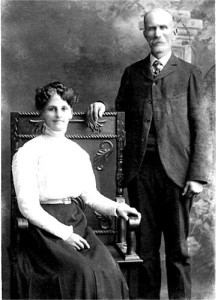
Eliza Mary Shult, the second wife of Featherstone Martindale had a huge influence on Spencer Smith, and he fondly recalls about her in his poem written in 1911.
I’m sure old Fred would be quite crusty at times, and probably scared the lads half to death many more times, but Spencer’s poem has a softer edge to it, especially towards Eliza Mary. Eliza Mary died in 1895 from complications of the birth with her last child George Martindale. By this time, young Spencer had already left the Martindale farm. If Spencer actually stayed the full 3 years until he was 18, his servitude would come to an end in January 1888. After the death of Eliza Mary, Fred married a spinster named Margaret Anna Peart in 1907.
The Peart family in Caledonia, which is very large in number, just like the Martindale’s is somehow linked to the Peart family in Burlington, my guess is they are probably cousins. It’s only speculation, but the Jacob Peart farm in Burlington is on the land now occupied by Fortinos, Sears and Ikea, so maybe there was a connection for Spencer Smith to come to Burlington, especially if it was initiated through the Peart families in Caledonia and Burlington. The Peart farm was located directly across Plains Road from the Bell homestead. We’ll never know for sure, but we can at least think about it.
Spencer Smith was quite fortunate and did not face some of the severe hardships that other Home Children experienced. Far too many faced a certain hell of an existence.
The Truth about the British Home Children in Canada
Here’s what really happened to most of the British Home Children.
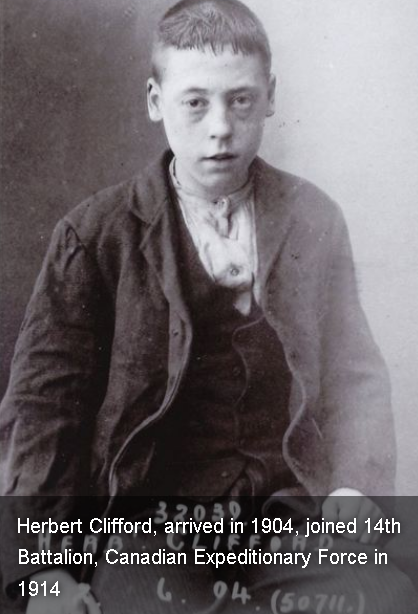 This became an economic issue more than anything else. It was strictly a case of supply and demand. Most of these organizations were faced with a huge demand. They had great difficulty in meeting the demand by farmers and governments in Canada and Australia. It was stated at one time that there were 10 applications for every child. So what were they going to do? The answer was simple. Start rounding up any child who potentially was wayward and lived in the area that was to be scoured for recruits. Overly simplified, absolutely, but not by much.
This became an economic issue more than anything else. It was strictly a case of supply and demand. Most of these organizations were faced with a huge demand. They had great difficulty in meeting the demand by farmers and governments in Canada and Australia. It was stated at one time that there were 10 applications for every child. So what were they going to do? The answer was simple. Start rounding up any child who potentially was wayward and lived in the area that was to be scoured for recruits. Overly simplified, absolutely, but not by much.
The fact remains, that the original concept was for orphaned children. The reality was that only 2% were orphans. The rest were children in the wrong place at the wrong time. It’s true that during these times some parents had great economic problems, perhaps they were unemployed or seriously ill, and they had no choice but to hand over their children to a workhouse, or some other care facility until they could get back on their feet and then bring their children home. The truth is, these organizations to help meet the demand, decided to ship them overseas without their parents’ consent. Most of these children had no idea what was happening to them. The parents did not know either. The children never realized that they would never see their family again.
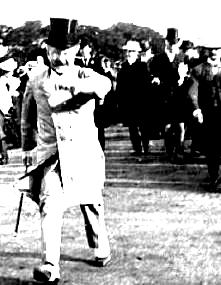
Dr. Thomas Barnardo was a very controversial character, and was responsible for exporting thousands and thousands of British children out of England and relocating them mainly in Australia and Canada. Here he is in 1905 leading the Founder’s Day Parade shortly before his death that same year.
The largest organization was run under the management of its controversial founder Dr. Thomas Barnardo. He somehow convinced the Canadian and Australian Governments to take these children. Once that was established, then other organizations like the Shaftesbury Homes, the Salvation Army, churches, and others also jumped on the bandwagon. Probably, none of these add on organizations realized that down the road, this program was going to spiral way out of control, and thousands and thousands of small children were going to be totally exploited in this moneymaking scheme to supply cheap child labour to Canadian and Australian farmers. You can dress it up any way you want, citing testimonial cases that turned out good, reminding people that they were paid a small amount, some orphans were adopted by loving families, but in my opinion, the bare bones reality was: Canada, Australia and England were totally involved in a repulsive child slavery program.
Whatever happened to the other 32 boys who made the trip to Hamilton?
When I researched for information on the other 32 boys that made the trip to Canada with Spencer Smith, only about 2 boys continued to surface on available records. The Flamborough Historical Society has documented one of these Home Children. That boy went on to marriage, become a father and worked as a market garden farmer in Aldershot. He turned out okay.
Spencer Smith turned out okay. The others, they completely disappeared. We know some could have been adopted and had their surnames changed. As an outsider, it is basically impossible to track them. We already know that conditions for some children were so severe that they continually ran away from the farms they were working on, and many were beaten to a pulp when they were caught and returned. We know with documentation as proof that over two thirds of all the British Home children were beaten severely. We know that many of these children were not allowed to become part of the family that was caring for them. 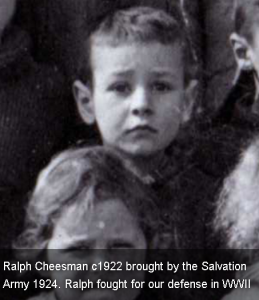 They were forced to live in exclusion on the farmer’s property, and not interact with the farmer’s own children or have any friends of their own. They were not loved or nurtured in any way. We know that they were constantly tormented and bullied by other children at local schools, and even adults participated in this human degradation of these children. We know that many just eventually disappeared. Where you ask?
They were forced to live in exclusion on the farmer’s property, and not interact with the farmer’s own children or have any friends of their own. They were not loved or nurtured in any way. We know that they were constantly tormented and bullied by other children at local schools, and even adults participated in this human degradation of these children. We know that many just eventually disappeared. Where you ask?
My guess is some were probably murdered when they were beaten so severely by the farmers, and when authorities came around they just claimed that they ran away. Some children because of horrific living conditions probably became so ill, that they died on the farm, and were quietly buried on the property so as not to draw any suspicion. Others may have committed suicide, and became nothing more than John or Jane Does stashed away in a local morgue, waiting for no one to identify them. Whatever the reason, they’re gone, and we don’t know have explanations. Have a look at this story that appeared in the Saskatoon Star-Phoenix newspaper on April 23, 1930 about a young British Home Child boy named Arthur Godsall who was savagely beaten on a farm in Campbellford by farmer William Albert Hay, age 37.
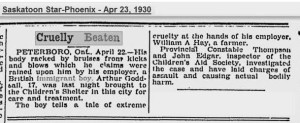 Albert had just arrived from England with many other British Home children and they all disembarked at Halifax from the ship Albertic on March 17, 1930.
Albert had just arrived from England with many other British Home children and they all disembarked at Halifax from the ship Albertic on March 17, 1930.
Albert made his way to the Hay’s farm in Campbellford, and less than a month after he arrived he endured this beating and was finally rescued. That’s just one tragic story, there were thousands of stories just like this. One boy was forced to live outside in the dog house with the farm dog. The farmer fed the dog table scraps, and if the dog was full and if by chance there was any dog food left over, it was for the boy to scavenge. Not to mention that this same farmer viciously beat the boy almost daily. Eventually, he was removed from the farm, and as far as I know this farmer did not face any charges. This is unbelievable, but true. This happened in Canada. If you do some basic internet research, you will find these stories and many more.
What’s really disturbing is just how low profile this tragic event in human history was, and just how little we know of it now. But, it is becoming more widely known, and just recently as victims have finally come forward. In Australia for example, the Australian Government were finally brought to their knees by a public outcry after the public learned the truth from these victims, and the government brought forth an apology for their involvement in this hair-brained scheme. Also, the British Government were totally embarrassed by previous governments’ involvement in this tragic situation also came forth with an apology offered by then Prime Minister Gordon Brown. And what about the Canadian Government?
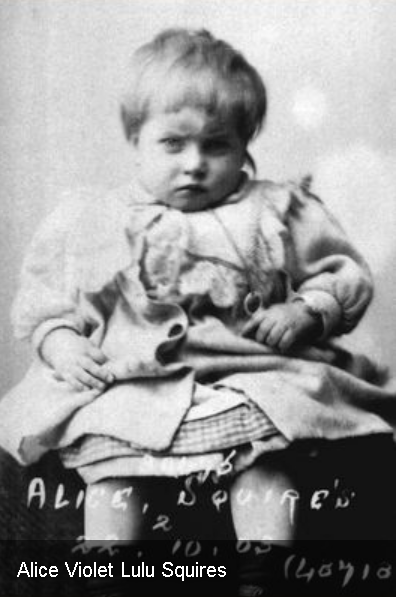 Where do we stand? Sadly, and unfortunately, the Canadian Government has essentially taken the position that this isn’t really a big deal, and no apology is warranted or forthcoming, even though they backed and encouraged this form of child slavery and abuse under the guise of helping disadvantaged children. Personally, I think that Jason Kenney the Cabinet Minister responsible for these remarks was not that well informed on the situation when confronted with the apology question, and consequently brushed it off as unimportant. I encourage you to contact Burlington’s local Federal Member of Parliament, Mr. Mike Wallace, who is a very decent man, and please voice your concern. I would like to think that Mike can champion this cause and help us get this apology from the Canadian Government. It’s long overdue, and it’s the right thing to do.
Where do we stand? Sadly, and unfortunately, the Canadian Government has essentially taken the position that this isn’t really a big deal, and no apology is warranted or forthcoming, even though they backed and encouraged this form of child slavery and abuse under the guise of helping disadvantaged children. Personally, I think that Jason Kenney the Cabinet Minister responsible for these remarks was not that well informed on the situation when confronted with the apology question, and consequently brushed it off as unimportant. I encourage you to contact Burlington’s local Federal Member of Parliament, Mr. Mike Wallace, who is a very decent man, and please voice your concern. I would like to think that Mike can champion this cause and help us get this apology from the Canadian Government. It’s long overdue, and it’s the right thing to do.
Here’s how to reach Mike Wallace, Member of Parliament: Burlington Mall Office, 777 Guelph Line, Suite 209, Burlington, Ont. L7R 3N2. T: 905-639-5757 or F: 905-639-6031
House of Commons, East Block, Suite: 115, Ottawa, Ontario, K1A 0A6
T: (613) 995-0881; F: (613) 995-1091 or email, mike.wallace@parl.gc.ca
There is an incredible website on the British Home Children. https://canadianbritishhomechildren.weebly.com/
It tells the whole story of the plight of these exploited children. It will break your heart to read and watch some of the videos made by former Home Children, these men and women who are now elderly, who have finally broken their silence to tell the real story of what happened to them. The website also has a form that can be signed. It is a petition to persuade the Canadian Government to offer an apology to these unfortunate people, many still alive in Canada, and still suffering mental anguish.
Add the website to your “Favourites”. It is quite large and takes a fair bit of time to go through it properly, so you will likely have to go back several times. The website also is constantly updated with more unbelievable stories about this shameful part of our Canadian past.
















My Grandfather was a Bernardo boy sent to Canada from England. My Grandmother on my Dad’s family had two boys who were called Home boys
Thanks for really telling it like it is, Mark! These children were so ashamed of being Home Children often they didn’t even tell their own families of their past. That was the case with my grandfather, we had no idea who he really was until I happened upon Lori Oschefski’s fantastic website that you mention and from there I joined the FB group British Home Child Advocacy and Research Assoc. (BHCARA). Through this I was able to finally learn my great-grandparents names and that Granddad had a brother who was also a BHC but who was KIA at age 19 during WW1. Thanks again for doing such a good job on getting the word out about this sad part of Canadian history.
Thank you for reference to my great-uncle Arthur Godsall. I’m wondering whether you have a couple of typos. You firstly and correctly refer to him as Arthur, but if I am reading the article right you refer to him later as Albert. Also the farmer was convicted:
FARMER FINED AND JAILED FOR ASSAULTING HELP
Newmarket Era (Newmarket, ON), 16 May 1930, p. 1 …Peterboro, May 8. — Fifteen days In jail and a fine of $200 was the sentence imposed on Albert Hay, Seymour township farmer, to-day by Magistrate Langley for assaulting and doing grievous bodily harm to Arthur Godsall, immigrant farm boy. His worship declared the offence was a very serious one…..’
Best wishes
Hello sir, my grandfather and his brother were BHC, children…they were removed from their home in Hackney in March of 1913,,,the circumstances for their removal is still unknown…what I do know is that their father died of TB in 1909..there were five children at the time of the father’s passing…in 1913 their mother had another child out of wed lock…there was a law at the time called the bastard law and it is my understanding that there were no public assitance programs. From what I gather the law prevented the mother’s in such situations from recieving help even from the church and I do not know if this was part of the reason for them being removed from the home. I do not even know why my grandfather and his brother were the ones chosen to be removed. They were then put on the HMS Corienthien on March 13, 1913 and arrived in Saint John, NB on March 30, they were about 300 boys on the ship with them. They were put on a train and sent to the Barnardo home in Toronto, its my understanding that at the time youngsters could not work until they were 15 yrs old..so I’m guessing they remained in the home until then, at this point is when the boys were separated. I find my grandfather again in Detroit, Michigan working in the ship yards as a riveter in 1920. For some reason he returns to Canada at some point. He and his brother show up again in the 1921 census working on a farm in Essex, Ontario. In 1922 they come to Detroit for good and settle down and raise their families…The big missing pieces of their story and will cost families such as mine 100 pounds sterling, or about 163.00 US. AND to top it off the money will go to the Barnardo people the very perpertraitors of this scheme…I hope to be able to someday fill in the missing pieces of their stories.
Thank you Mark for an excellent article! I will be posting the links for both this one and the Spencer Smith article in our February Newsletter as a follow up to our January edition which featured Spencer. We have a very active Facebook Group for descendants and people interested in our BHC. I encourage people to join our almost 2,000 members now to help with our mission of bringing national recognition to our BHC. https://www.facebook.com/groups/Britishhomechildren/
In my own family tree, there is 18 BHC, which included my Mother who is one of Canada’s few surviving children. Our stories run from the good to one of the worst stories of abuse I have ever heard!
Hello Tenni,
Without doubt, Irish children were also rounded up, and shipped overseas. Your information expands on what I have already provided, involving the plight of Irish children.
It has been estimated that about 1/10 of 1% of all Canadians of British descent, may be able to trace some of their family descendants back to Home Children in Canada. This must amount to a staggering number of people.
Unfortunately, many of the “Home Children” from the British Isles did not do not well living in Canada. Your grandfather was one of those who must have had a difficult life in Canada, and died a tragic death. Thank you for sharing this personal story with me.
For your grandfather’s sake, I urge you to contact your Member of Parliament and bring this to the attention of the Canadian Government, who so far have refused to issue an apology for their involvement with this shameful part of our past. Britain and Australia were the other two countries also involved in this scheme, and they did offer apologies for their involvement with child slavery.
Mark Gillies
I find this article clearer than your other two previous articles. Perhaps, in part, due to sticking to the concept nd not weighing down the reader with side bar lineage trivia. Your knowledge and research skills are of a great asset to Burlington citizens. Your information about Spenser Smith is wonderful.
The plight of the British Home children is a horrific tragedy as you point out. The fact that Spenser Smith was able to become such a successful business man and caring citizen after his difficult background is wonderful. The farmers that had him as an indentured servant and followed by probably kind supportive employers is significant.
As you point out, many of these children disappeared. My own paternal grandfather was one of these children arriving in Canada at the age of 12. Family stories are few about him. He died a drunk Irishman hitting his head to die before 40. His meet my grandmother at the back door of a well to do Hamilton family. He was illiterate. He lied about his place of origin on his wedding certificate stating that he was from Blackpool when he was born in Dublin. Why he was sold is unclear but he had a younger half sister. I have come to realize that we should stop calling these children even “indentured servants”. They were slaves plain and simple. The children were sold into slavery. You refer to them as British but I wonder how many were Irish slaves. Irish slavery goes back to the 1600. An Irish female salve could have been bought for less than a black slave. Indentured servant was a term invented to hid the lie that Canada had child slaves even in the 1900’s.
Hello Zaffi,
Thank you for your kind words about my article. I appreciate it. Your own personal information on your grandmother and aunt is of great interest. Most “British Home Children” did not do well when they arrived in Canada, just like your grandmother, yet a few others did okay. Your aunt Grace appears to have benefitted from a new start in Canada with a decent family.
Hopefully, as more of us become aware of this horrific event from Canada’s past, we can be stirred into increased action. I urge you and others to contact your Member of Parliament and raise your concern about this Government’s lack of willingness to bring forth an apology for their involvement with this form of child slavery.
Mark Gillies
Wonderful article.
My maternal grandmother was sent to Canada as a home child along with two sisters and a brother. Grandma Helen and Great Aunt Grace were each “adopted” to very different homes. My grandmother, was taken to a Renfrew County farm, was not treated well nor was she accepted by the community even into adulthood. Grandfather’s parents did not approve of him marrying a Home Child.
Her sister Grace was taken to an Ottawa city household by a wealthy family. Where she was treated to an excellent education, piano, dance lessons and such.
I would like to recommend two excellent and detailed autobiographies about a home child. She was one of Barnardo’s wards. Also a follow up biography about her adult life with a long career as a visiting health nurse for new mothers.
1)Mary Janeway: The Legacy of a Home Child
2)Whatever Happened to Mary Janeway: a Home Child Story
Both written by Mary Pettit; one of the many children she helped into the world.